Menu
- About Japan
- Traffic Accessibility
- Culture
- Food Culture
- Accommodation
- Sightseeing
- TOKYO 2020
- Comic
-
Language
Accommodation
前に戻る
Main means of transportation
Page Back

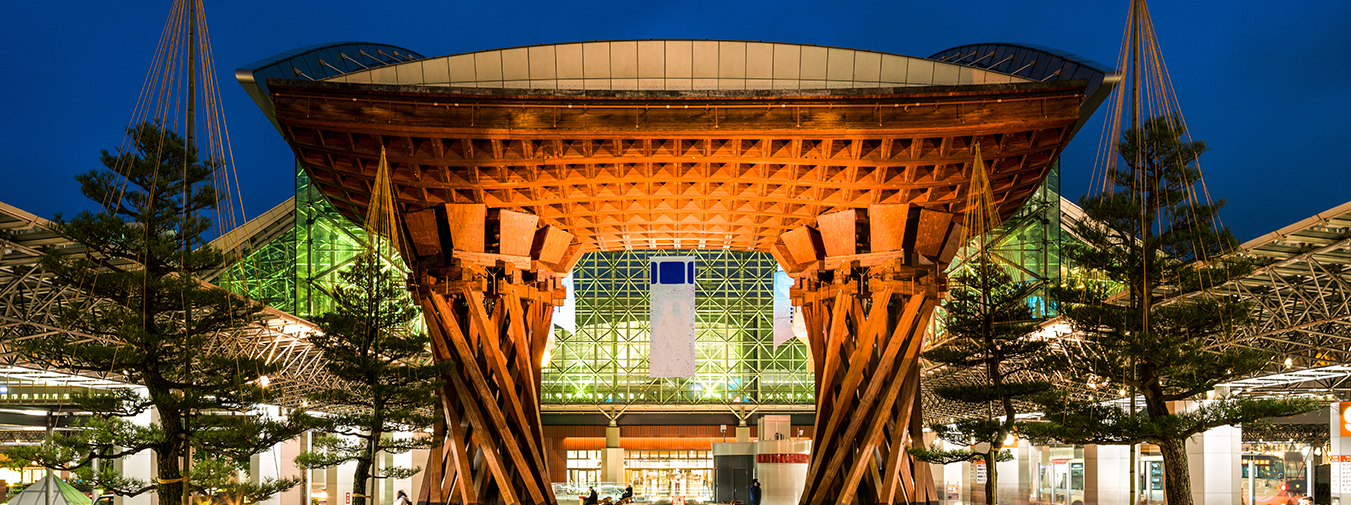
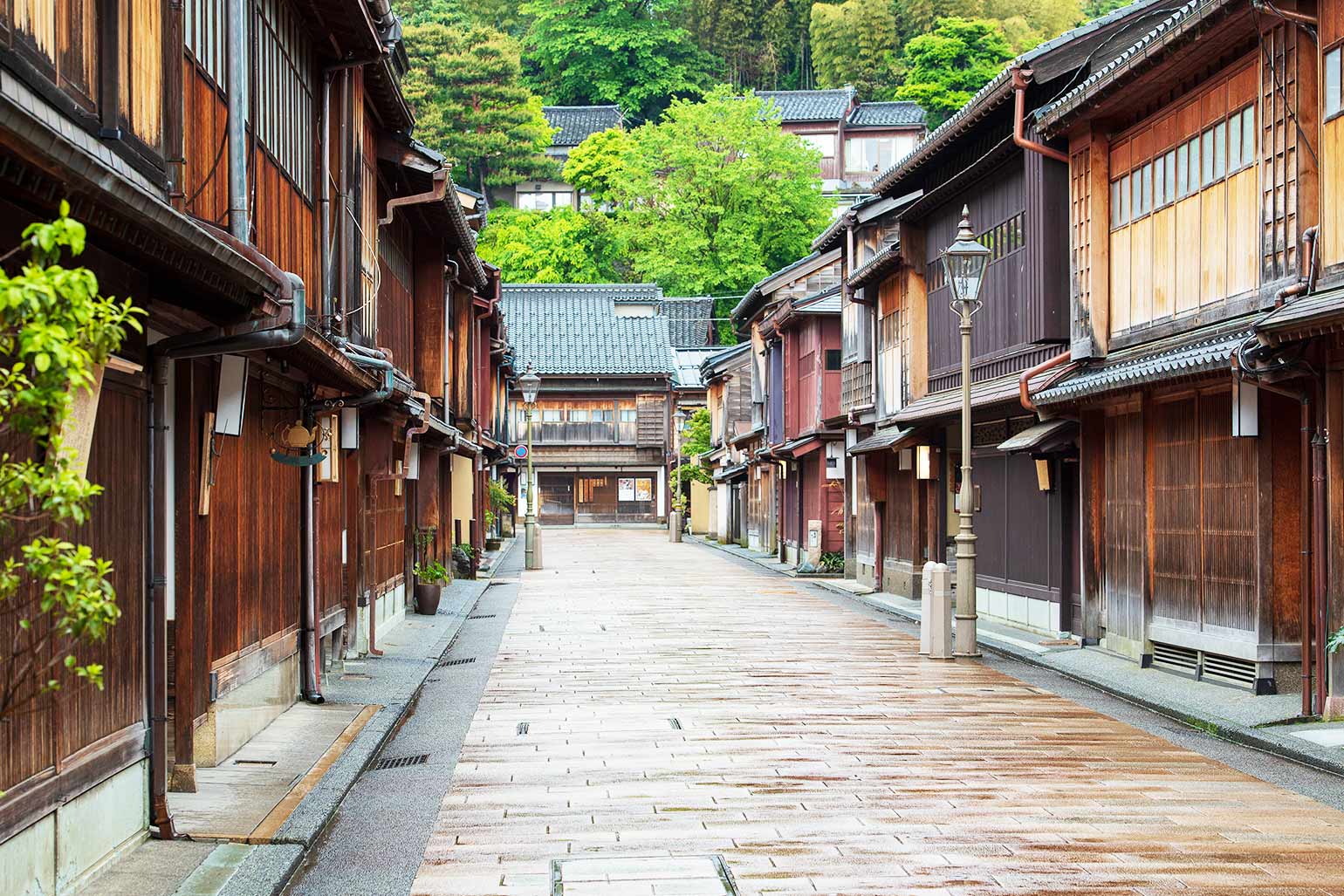
In the Edo period, “Kanazawa” was called “Kaga Hyakumangoku (One million Stone of Kaga)” as it offered the highest rice crop stipend (high-stone in Japanese) for the daimyo (Japanese feudal lords).
“Kanazawa” flourished as a metropolis together with “Nagoya” and, at the time, was one of the most developed cities following “Edo”, “Osaka” and “Kyoto”.
“Kanazawa” was first registered in historical records halfway through the Warring States period.
In the middle of the 16th century, “Tokugawa Ieyasu” opened the Edo Shogunate, and “Toyotomi Hideyoshi” carried out the unification process.
The “Maeda family”, who served as the minister of both, continued to use the territory as a base.
Later, “Kanazawa” developed as an essential castle town and held that status for a long time.
Especially the transportation routes directly bonded to other major cities such as “Osaka” and “Kyoto” became crucial, being the most prosperous cities on the Sea of Japan.
After the Edo Shogunate was opened, no other war was declared.
Although it was a large city, during the Second World War, “Kanazawa” was not struck by air raids, allowing the city to preserve its atmosphere of the time.
“Kanazawa” is an exceptional place even within Japan.
It can be proud of its many traditional crafts born there, that nowadays contribute to a vast industry.
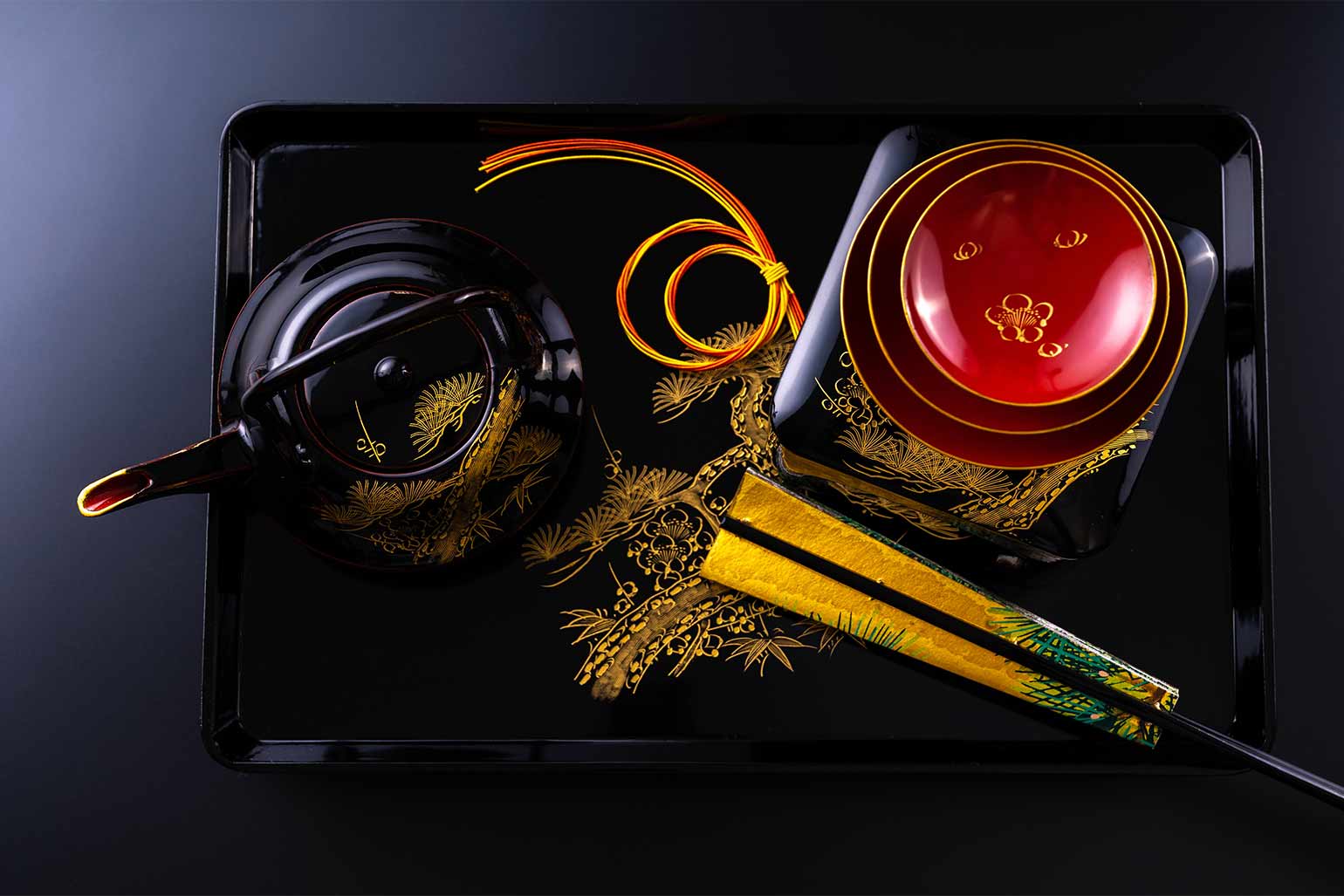
After entering the modern era, several branch offices that form the bases of large domestic companies started operating.
Moreover, as previously mentioned, “Kanazawa” is undoubtedly a popular place for sightseeing, thanks to its exquisite historical landscape.
In recent years, with the introduction of the “Hokuriku Shinkansen”, access from the Tokyo metropolitan area has also become more straightforward.
“Kanazawa” is a charming tourist spot also in terms of food, with its traditional local cuisine of “Jibu-ni (a typical stew)” and famous seafood including crabs and nodoguro (shore dotterel).
Below, we will be introducing the main touristic areas in “Kanazawa”.
We will also make sure to recommend areas that are good sightseeing spots also other than “Kanazawa” in the “Travel guidebook” section.
Please check it out!
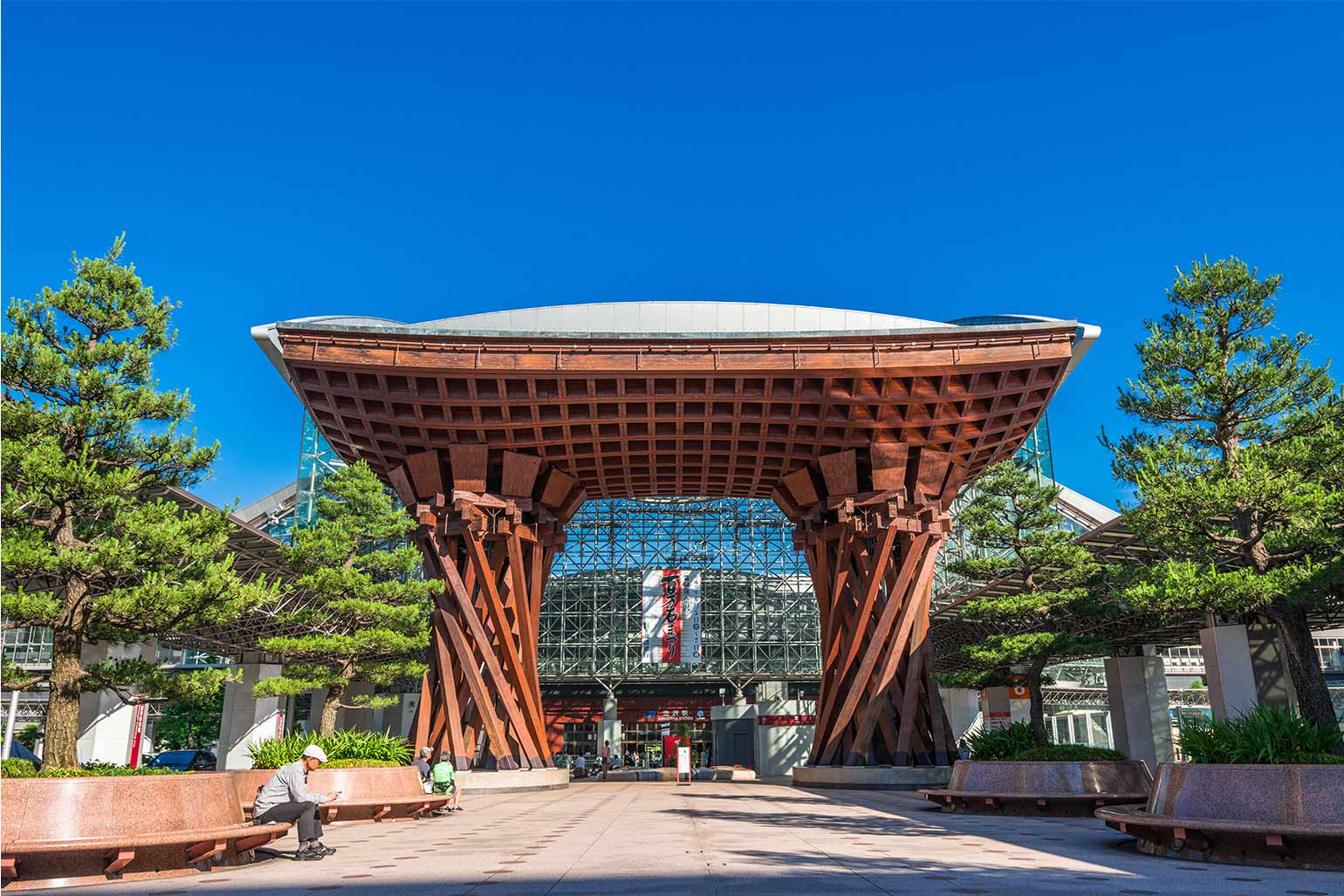
The “Tuzumimon” gate is a very eye-catching landmark of “Kanazawa Station”.
“Kanazawa” has become one of the most popular tourist regions in Japan with the opening of “the Hokuriku Shinkansen” in recent years.
It takes about 2.5 hours from “Tokyo”.
It takes about the same from “Osaka”, and about 3 hours from “Nagoya”.
As for transportation within “Kanazawa” city, you will usually take a bus or cab.
The main tourist spots are all within a 2~3km radius in the southeast side of the station, so unless it’s winter, you can get around on foot.
There are many wonderful places to visit, so we’ll roughly divide them into three areas.
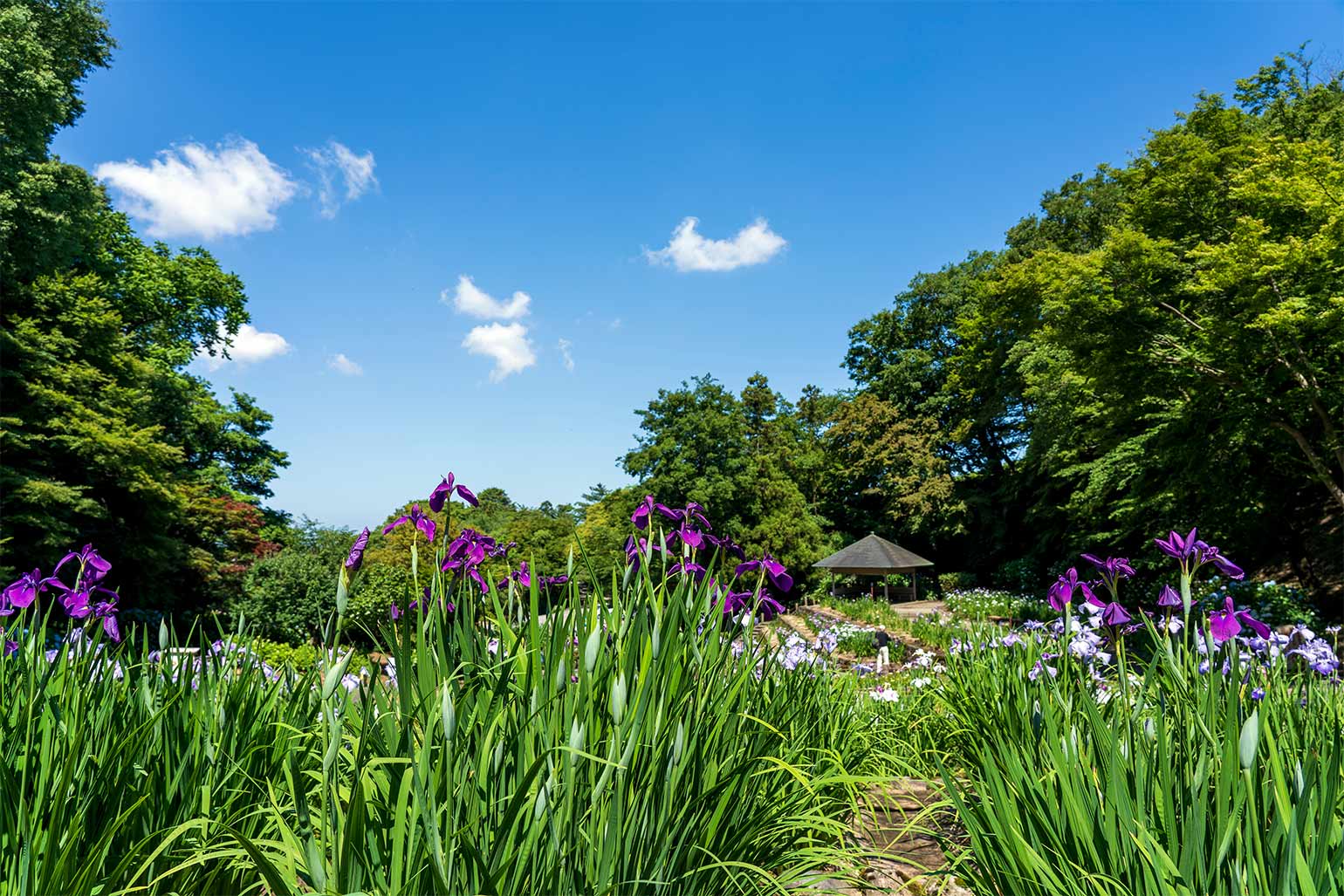
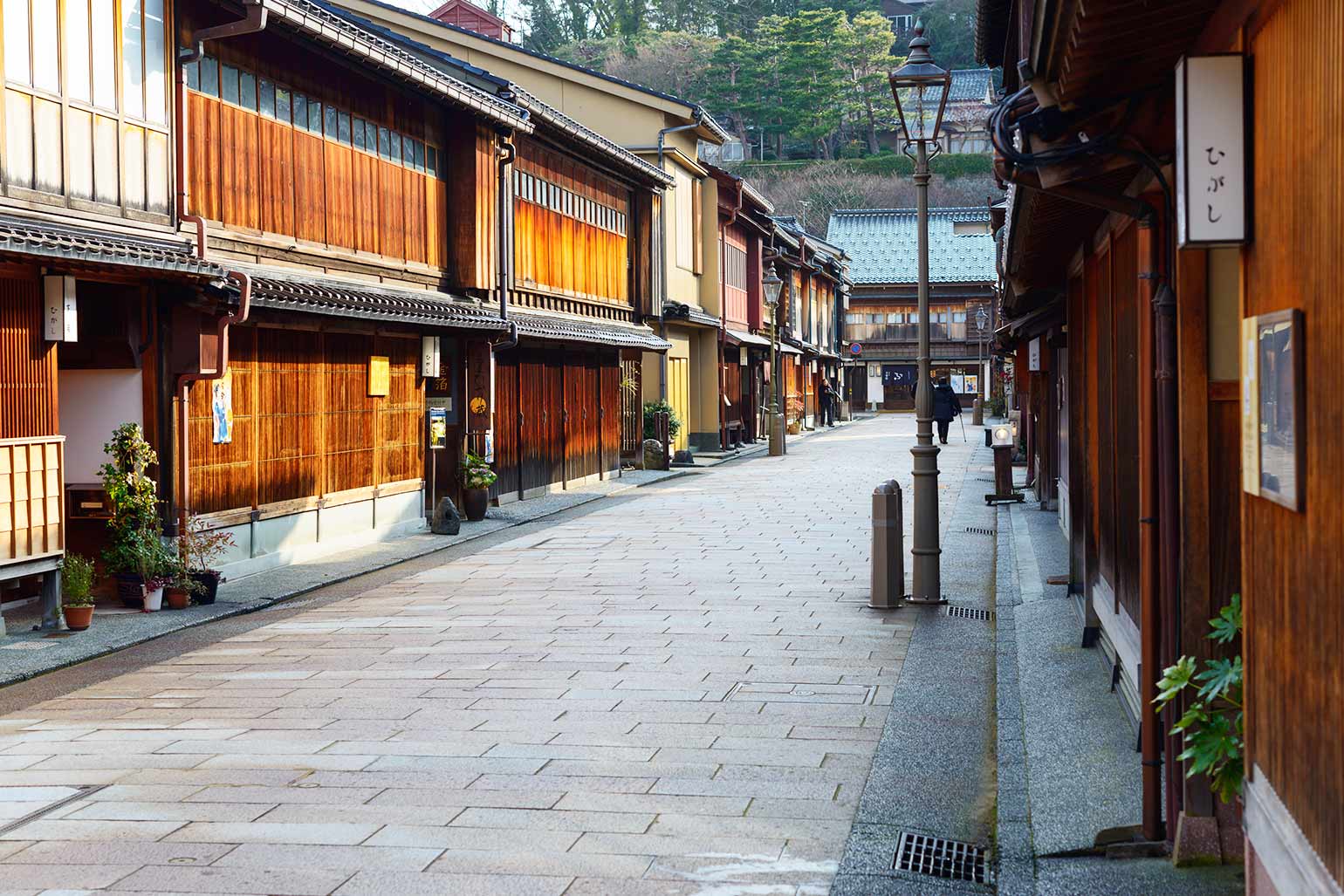
First, the area leading to “Utatsuyama Park”, which overlooks the “Kanazawa” urban area.
“The Omi-cho Market” is the kitchen of “Kanazawa”.
You should definitely try the seafood rice bowls or sushi that can only be found in this area blessed with fishing grounds.
There are so many foods that are just right to fill your stomach a little bit, and you might be wondering which one to eat.
Just past the market is “the Kazue-machi / the Higashi Chaya-gai” streets, which is famous as “the Kanazawa Chaya-gai” streets.
The scenery of traditional Japanese restaurants (usually called “Ryotei”) and teahouses (they are called “O-Chaya”) lining the streets is unparalleled.
You will be able to enjoy the streetscapes of the Edo period, when the culture of the townspeople flourished.
And so you will eventually reach “Utatsuyama Park”.
The scenery of this park is especially recommended to visit when hydrangeas, irises, water lilies, etc. are in bloom.
This is also a famous historical park in Japan.
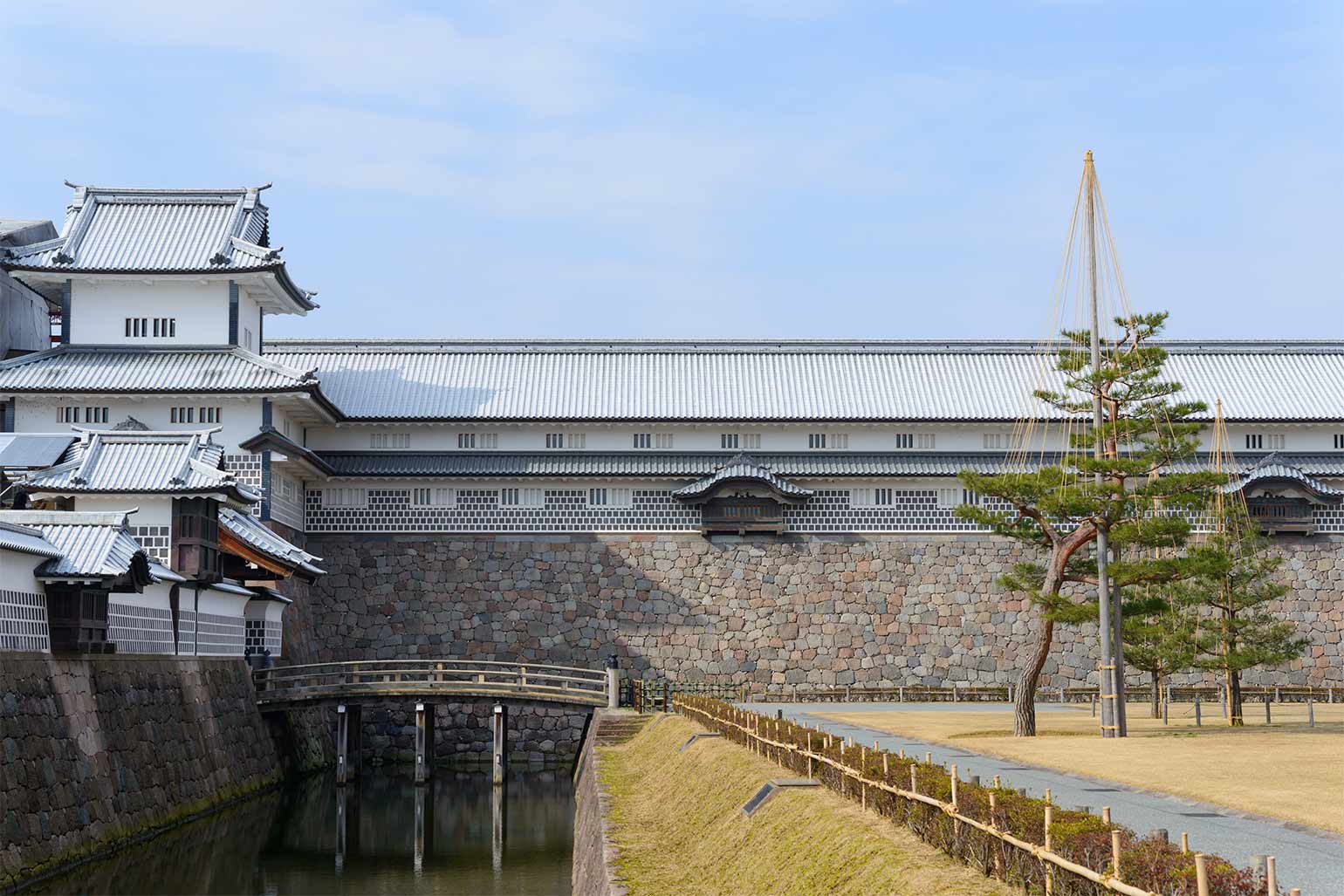
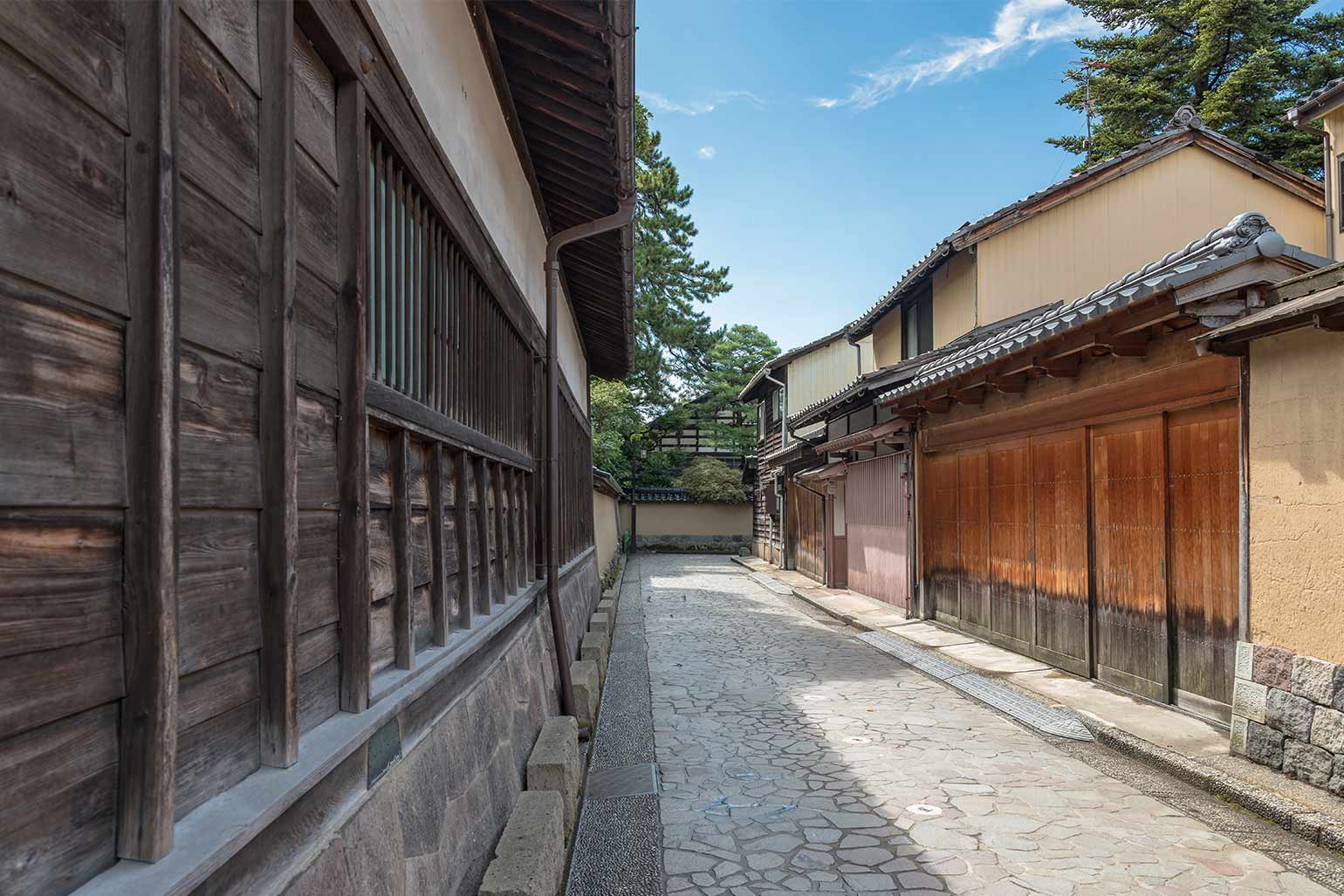
The second is the area around the “Kanazawa Castle Site”.
It’s the area in the south from “Kanazawa Station”.
This area where “the Nagamachi samurai residences Ruins” are located is a very valuable spot where the houses and streets of the feudal lords of the Edo period castle have been preserved.
Some of the famous houses can be visited inside, and are popular with people from overseas.
“The 21st Century Museum of Contemporary Art”, which is close to “Kanazawa Castle Park”, is one of the most popular tourist spots in Japan.
And “Kenrokuen Garden”, which is well-known as one of the three greatest Japanese-style gardens.
It is the famous garden with different seasonal charms.
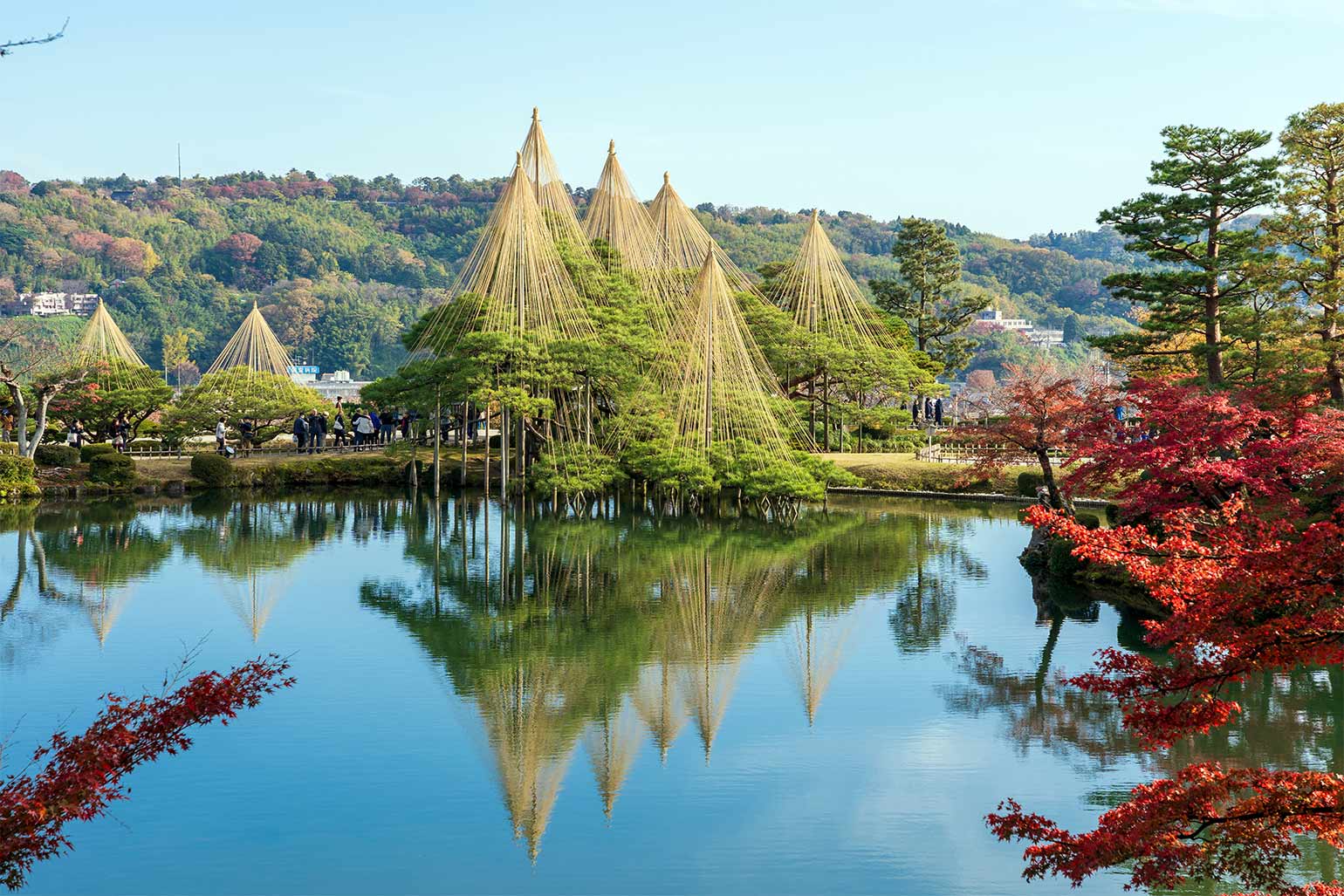
In the surrounding area, there are many museums and other facilities related to the traditional crafts of “Kanazawa” or the others.
“Kaga Yuzen”, “Kutani ware”, “Wajima lacquerware”, and etc…
There are many traditional arts and crafts that represent Japan, that might be the another charms of “Kanazawa”.
The third is the area around “the Nishi Chaya-gai” street.
The area is a little further south than the area where “the Nagamachi samurai residences Ruins” are located.
This “the Nishi Chaya-gai” street is one of “Kanazawa’s three major chaya-gai” streets along with “Kazusa-machi Chaya-gai” street and “Higashi Chaya-gai” street.
In recent years, with the increase in the number of tourists, it has become a gourmet spot with many cafes and sweets stores.
We highly recommend “Myoryuji Temple” in this area.
It’s called the Ninja Temple, because of that it has a unique and complex architectural style.
In fact, there are no “ninja” features.
But, please do not worry.
“Karakuri dolls”, with intricate and complicated mechanisms, is known well as one of the traditional crafts of “Kanazawa”.
“Myoryuji Temple” is the building of this temple itself is made of these intricate and complicated mechanisms.
Doesn’t it sound interesting?
Not only does “Kanazawa” have a large number of wonderful tourist spots, but it also has many delicious foods that are unique to this region.
In addition to the famous “Kaga cuisine” and seafood dishes such as seafood rice bowls, the area has long been a heated market for sweets.
Such might be the result of the city’s continued prosperity as a historic castle town without being exposed to the ravages of war.
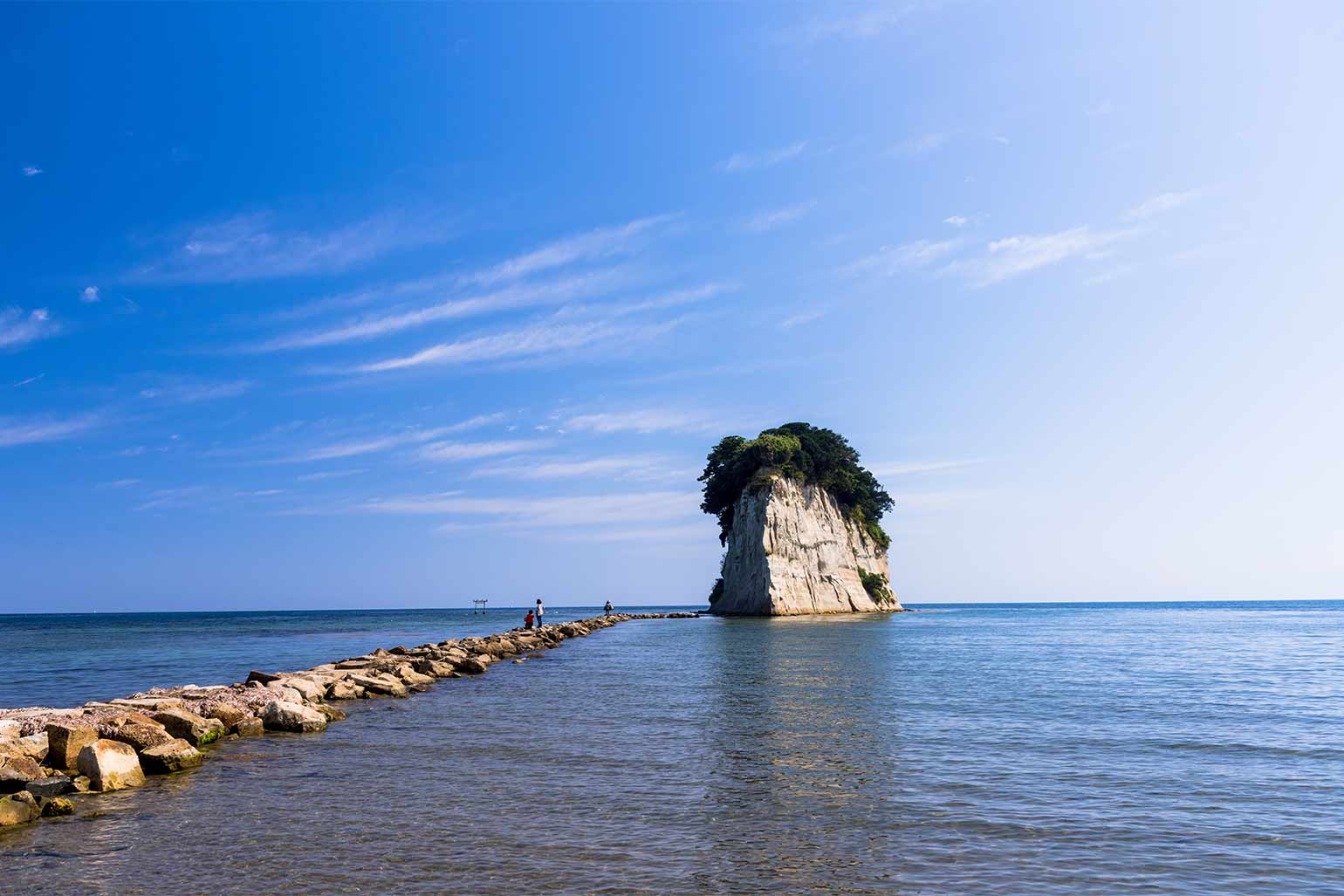
This area is located at the northern end of Ishikawa Prefecture.
It looks like the head of a dinosaur, doesn’t it?
This is a very popular driving course.
If you want to go all the way around, you will need to rent a car.
But it’s such a nice area that it’s well worth it.
“Shiroyone-Senmaida”, a unique paddy field landscape in this region.
“Michi-no-Eki Suzu-Enden-Mura”, where you can experience making salt using the method of “Agehama(one of the ancient methods of salt production)”.
The “Blue Cave” is known for its appearance in Japanese mythology.
The isolated appearance of “Mitsuke-jima” will surely catch your eyes.
“Wajima-nuri” is one of the most famous traditional Japanese crafts that is also popular overseas.
At “the Wajima Kobo Nagaya”, you can watch the craftsmen at work.
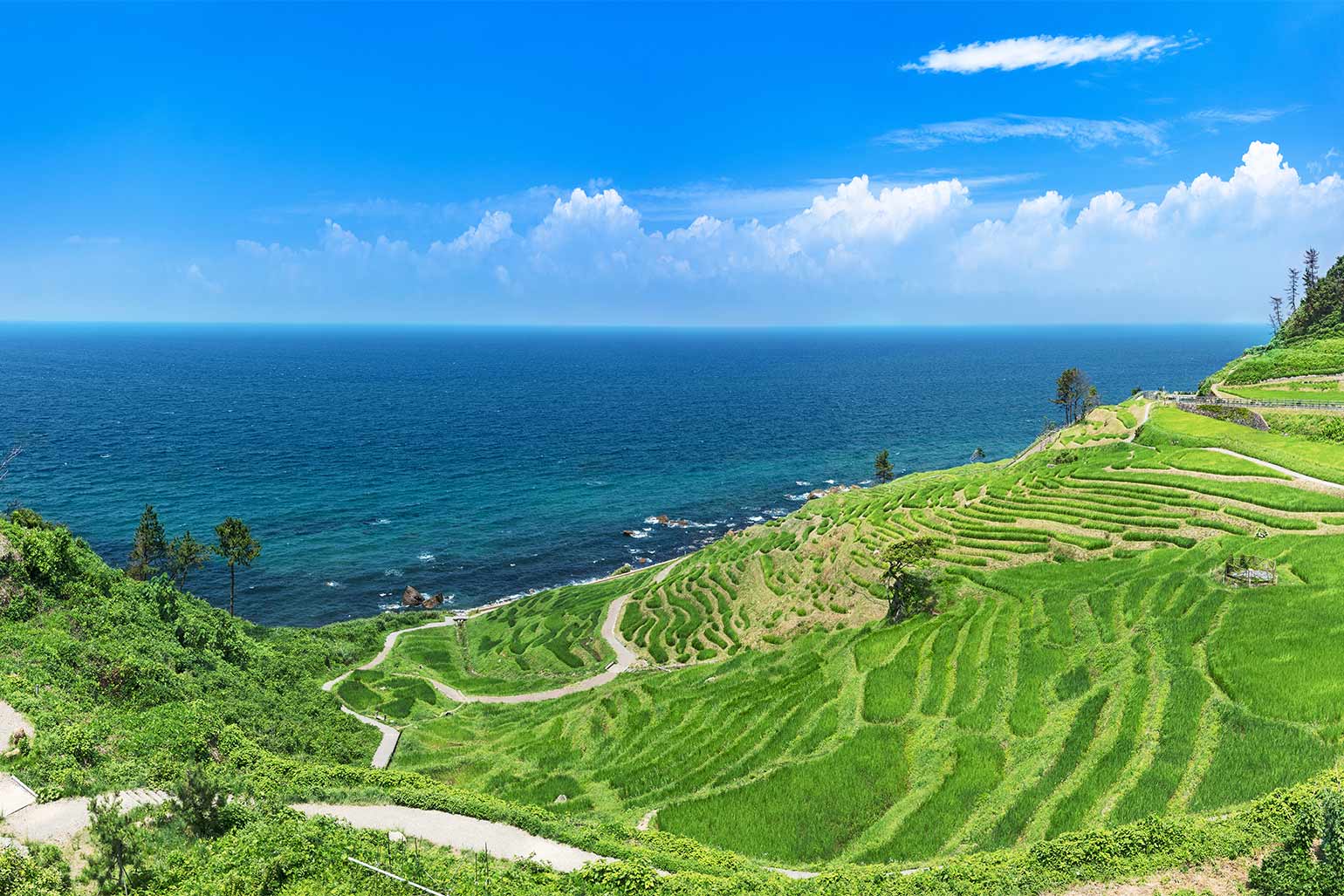
Of course, you can also go sightseeing in “Nanao”, where can be reached by train from “Kanazawa Station”.
It is also a good idea to stay in “Wakura Onsen” and enjoy the local seafood.
The Hokuriku region is famous for “crabs”!
Let’s visit to eat “crabs”!
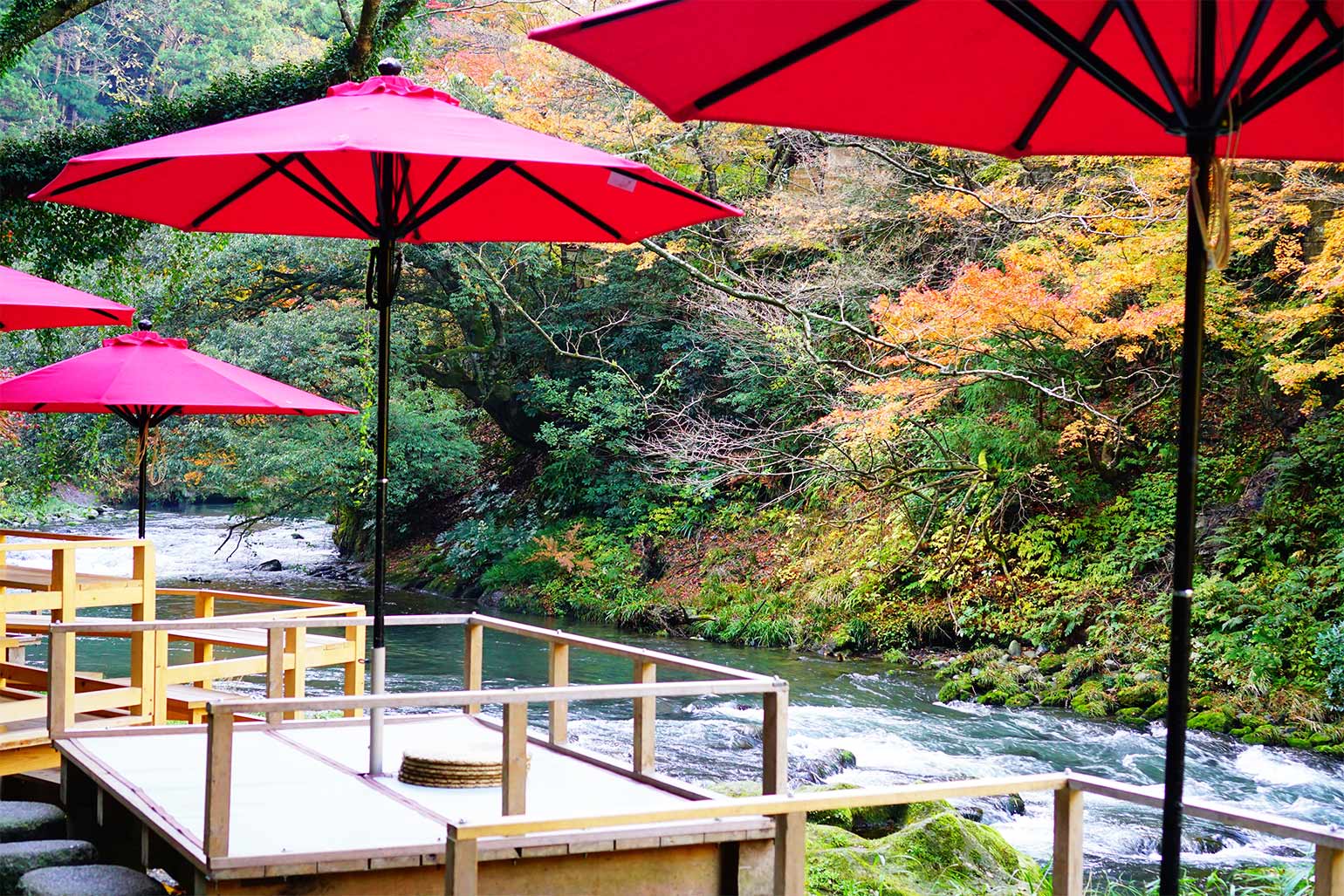
It takes about an hour by train from “Kanazawa Station”. With the Hokuriku Highway, it’s about the same. We would recommend driving along the Hokuriku Highway, if possible with a rental car. You can see the ocean all the time… It’s pretty fantastic. In Ishikawa Prefecture, there is the only place in Japan where you can drive along the edge of the waves, “Chirihama Beach,” so we recommend that you use a car to tour around the region. “Kaga Onsen”, located here, is a famous hot spring resort in Ishikawa Prefecture. In autumn, “Kakusenkei” is a great spot to enjoy the colorful beautiful leavescapes.
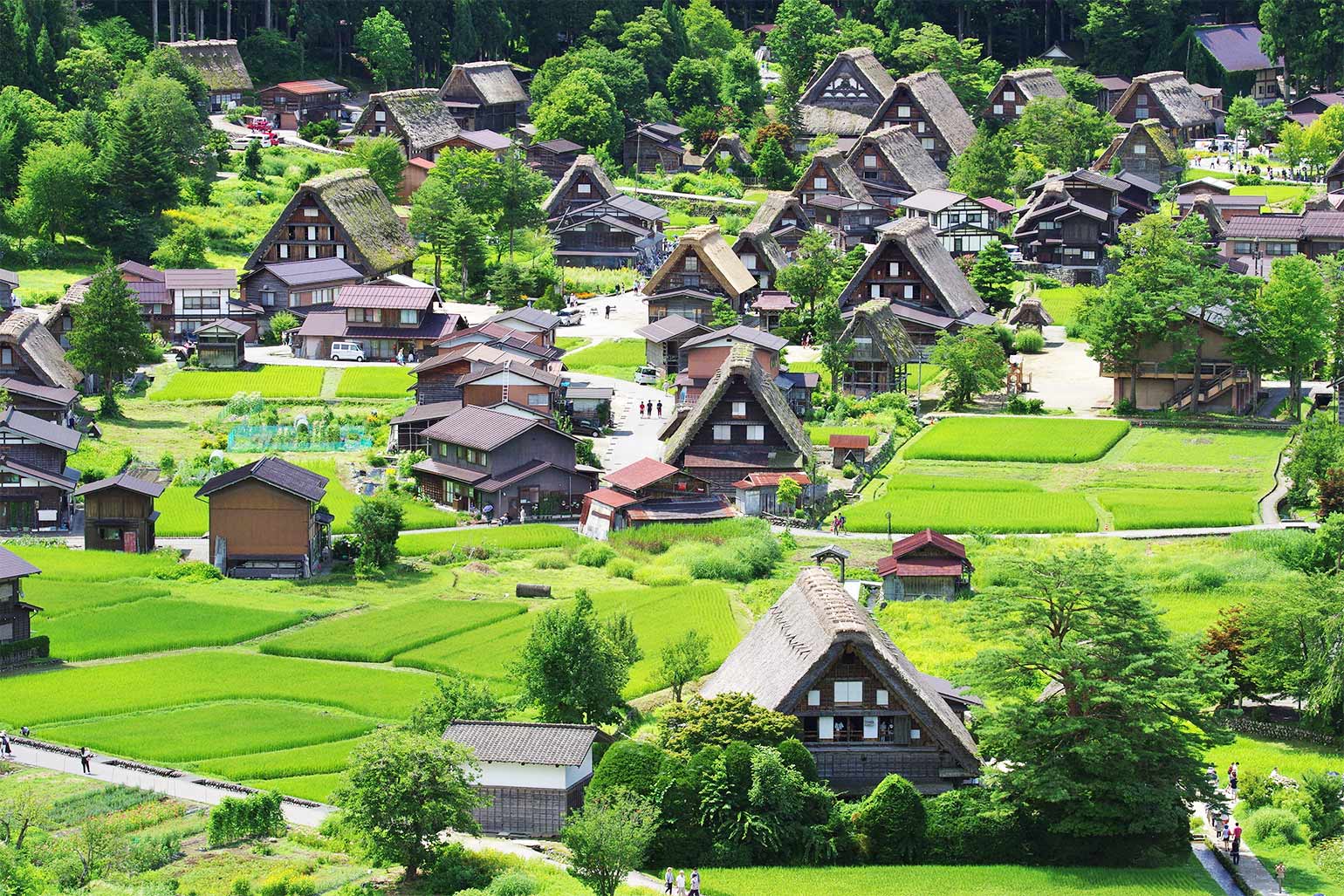
“Shirakawa-go” is famous as one of a World Heritage Sites. It is a famous amazing sightseeing spot with its rows of “Gassho-tukuri” houses, but it is actually surprisingly close to “Kanazawa”. There is also a highway bus (advance reservation required) that takes about an hour to get there. You can enjoy the scenery of the old Japanese village as if it appeared in a Japanese fairy tale. If you are in “Kanazawa”, why not add it to your sightseeing plan?

It is one of the largest cities in the Hokuriku region.
It takes about one hour by train from “Kanazawa Station”.
“The Hokuriku Shinkansen” stops at this “Toyama” city, making it convenient to access from other major cities.
“Takaoka” city, where is not far from “Toyama”, is the birthplace of Fujiko Fujio, the Japanese manga artist.
The Gassho-tukuri village in “Toyama” is one of the best places to visit for sightseeing.
To tell the truth, there are other areas where you can see “Gassho-tukuri” villages other than “Shirakawa-go”, like this spot.
“Suganuma Gassho-tukuri Village”, “Gokayama Gassho-no-Sato”, “Ainokura Gassho-tukuri Village”, and so on.
Did you know that?
“The Kurobe Dam”, one of the largest dams in Japan, has long been a popular tourist spot, although it is some distance from “Toyama”.
The mountainous area of Toyama Prefecture is one of the heaviest snowfall areas in Japan (and one of the heaviest in the world).
In winter, the entire landscape of the snowy area is a must-see.
Be sure to take precautions against the cold…
It’s serious, OK?
使用言語を選択してください。